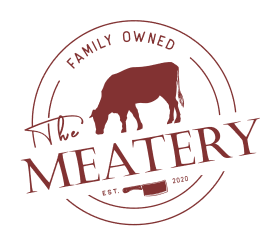A5 Wagyu represents the pinnacle of beef quality, and its rarity stems from several stringent factors. First, true A5 Wagyu comes exclusively from specific Japanese cattle breeds, primarily the Japanese Black (Kuroge Washu). These cattle undergo incredibly selective breeding programs that have been refined over centuries.
The production process is extraordinarily demanding. Farmers must adhere to strict regulations and traditional methods, including:
- Carefully controlled feeding schedules and specialized diets
- Stress-free environments that promote optimal meat development
- Regular health monitoring and meticulous care
- Specific raising periods (typically 28-30 months)
Additionally, achieving the A5 grade requires meeting exacting standards that most cattle simply cannot attain. Only a small percentage of Japanese Wagyu cattle qualify for this prestigious grade, making it exceptionally rare even within Japan. The Japanese government strictly controls Wagyu exports, further limiting global availability.
How rich and fatty is A5 Wagyu?
The extraordinary richness of A5 Wagyu creates a unique dining experience that sets it apart from all other beef varieties. The meat's intense marbling creates a characteristic "melt-in-your-mouth" texture that's often described as buttery or velvety.
This exceptional fattiness results from the unique composition of Wagyu fat, which contains a higher percentage of monounsaturated fats compared to other beef. The fat literally begins to melt at room temperature, contributing to several distinctive characteristics:
- Lower melting point than typical beef fat
- Complex flavor profile with sweet and umami notes
- Intense tenderness that requires no additional tenderizing
However, this richness means that A5 Wagyu is best enjoyed in small portions, typically 3-4 ounces per serving, as the intense flavor and fat content can be overwhelming in larger quantities.
Nutritional Profile
Despite its high fat content, A5 Wagyu offers some surprising nutritional benefits. The meat's unique composition includes:
- Higher concentrations of omega-3 and omega-6 fatty acids
- Elevated levels of conjugated linoleic acid (CLA)
- Significant amounts of essential amino acids
- Higher percentages of monounsaturated fats compared to other beef
Per 100g serving, A5 Wagyu typically contains:
- Calories: 450-500
- Protein: 15-20g
- Fat: 40-45g
- Iron: 2-3mg
- Zinc: 4-5mg
What is BMS (Beef Marbling Score)
The Beef Marbling Score (BMS) is a crucial component of the Japanese meat grading system, particularly for A5 Wagyu. This scoring system ranges from 1 to 12, with 12 representing the highest possible marbling.
For A5 classification, beef must achieve a BMS of 8 or higher. The scoring considers:
- Marbling density and distribution
- Fat quality and color
- Meat color and brightness
- Firmness and texture
The grading process involves trained specialists who evaluate each carcass using standardized lighting and precise measurement tools. This ensures consistency and maintains the exceptional standards associated with A5 classification.
Price Comparison And Value
A5 Wagyu commands premium prices that reflect its exceptional quality and rarity. Current market prices typically range:
- Retail: $200-400 per pound
- Restaurant portions: $400-600 per serving
- Whole cuts: $1000+ for premium cuts like ribeye
When comparing to other premium beef:
- USDA Prime: $20-50 per pound
- American Wagyu: $75-200 per pound
- Australian Wagyu: $100-300 per pound
The value proposition lies in the unique dining experience and exceptional quality, though it's important to note that A5 Wagyu is often considered a special occasion food rather than an everyday protein source.
Is A5 or A4 Wagyu Better?
The debate between A5 and A4 Wagyu often comes down to personal preference rather than absolute quality. While A5 represents the highest grade, some connoisseurs actually prefer A4 for several reasons:
- A4 offers slightly less intense marbling, which some find more palatable
- The lower fat content allows for larger portion sizes
- A4 typically costs 20-30% less than A5
- The beef flavor may be more pronounced with less fat masking it
Both grades represent exceptional quality, with the main difference being the intensity of marbling. A5 requires a BMS of 8-12, while A4 requires a BMS of 6-7. The choice between them often depends on individual taste preferences and intended use.









